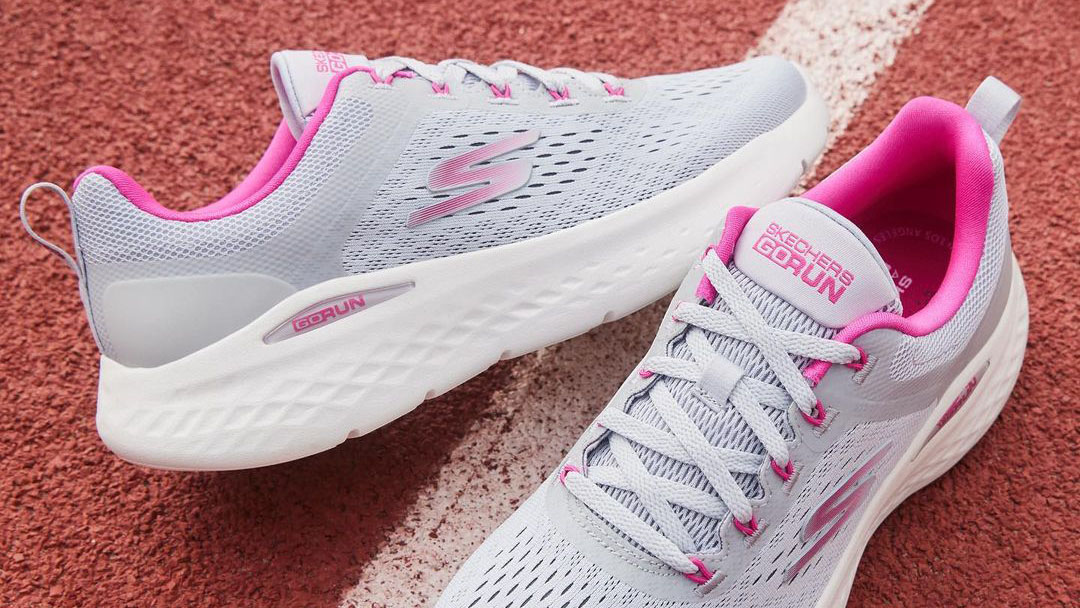
I’ve always viewed Skechers as more of a casual footwear brand, despite knowing of their activity-based lines like the GO WALK, GO GOLF, and GO RUN. I guess it’s rather closed-minded of me, but I found it hard to believe that the same company who designed my favorite wedge sandals and chunky flats could also make shoes for more intensive athletic pursuits. I really should have known better, as the main reasons I loved those sandals and flats were because they were supportive, comfortable, and durable — all qualities you need for a performance-oriented sneaker.
Still, I had my doubts when I laced up the Skechers GO RUN Lites for a few 5 and 10ks on my calendar. I’m a running shoe snob with absolutely terrible feet, so I’ve been a devotee of the high-end Brooks Adrenaline for several years now. Could the Skechers GO RUN Lites, at nearly half the price of my go-to sneakers, properly support and propel me on my runs? And how do they compare to some of the other best running shoes on the market? Read my full Skechers GO RUN Lite review below to find out more.
Skechers GO RUN Lite review: Price and availability
The Skechers GO RUN Lite retails for $80 normally, although some pairs are on sale through the Skechers website for $59.99. Even at full price, this would be considered cheap for a running shoe — most decent ones cost well over $100 at the very least. You may be able to find the GO RUN Lites at a lower price on sites like Amazon and Zappos.
The GO RUN Lites come in women’s US sizes 5 to 11, and men’s US sizes 7 to 14. Medium and extra wide widths are available for men’s sizes, while only medium widths are available for women’s. There are several color and pattern options available for both.
Skechers GO RUN Lite review: Design and fit
As I took my GO RUN Lites out of the box for the first time, I saw a lot of fancy, trademarked terminology: “Ultra Go,” “Air Cooled Goga Mat,” “Ortholite,” and “M Strike” all adorned the box’s lid. This was certainly more tech than I remembered in my chunky flats.
Overall, the GO RUN Lites look like most popular running shoes, if not a little more streamlined and low-profile. The outsoles are thick, which I generally prefer (there are those who tout the benefits of minimalist shoes, but my feet are just too far gone to run comfortably in those). The bottoms feature decent flex grooves and deep lugs, so you should feel relatively confident taking them out on the pavement. I’d steer clear of trail runs, however.
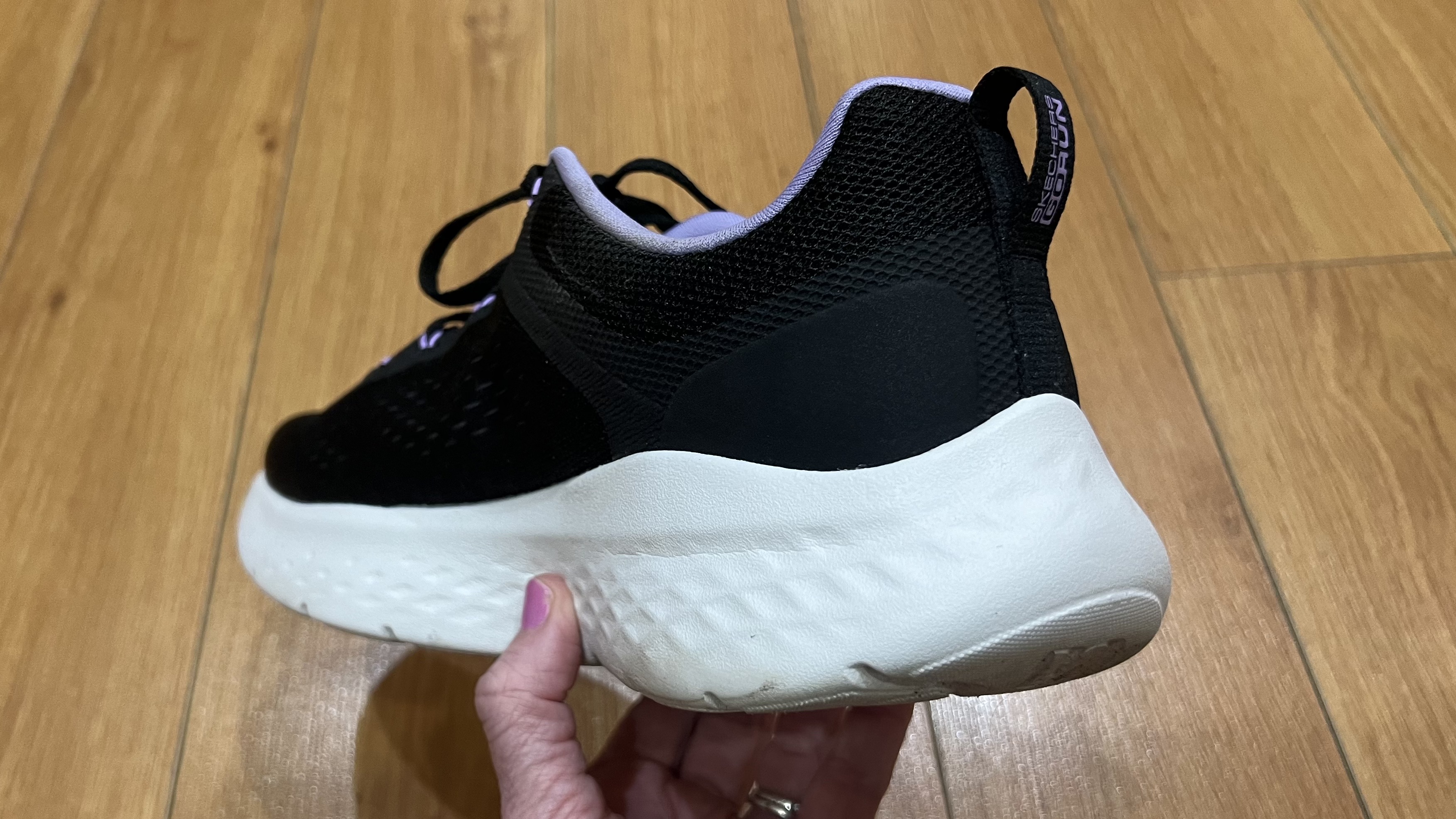
The midsole and insole is where all of Skechers’ performance advancements lie. The “Ultra Go” cushioning in the midsole is plush yet extremely lightweight, which is a big achievement – most running shoes with this level of bulk in the midsole tend to be pretty heavy. The insole features two additional layers of cushioning: the “Air Cooled Goga Mat” (a play on the words “Yoga Mat,” I’m assuming) that cradles the arches and provides some good rebound, and the deeper Ortholite comfort foam.
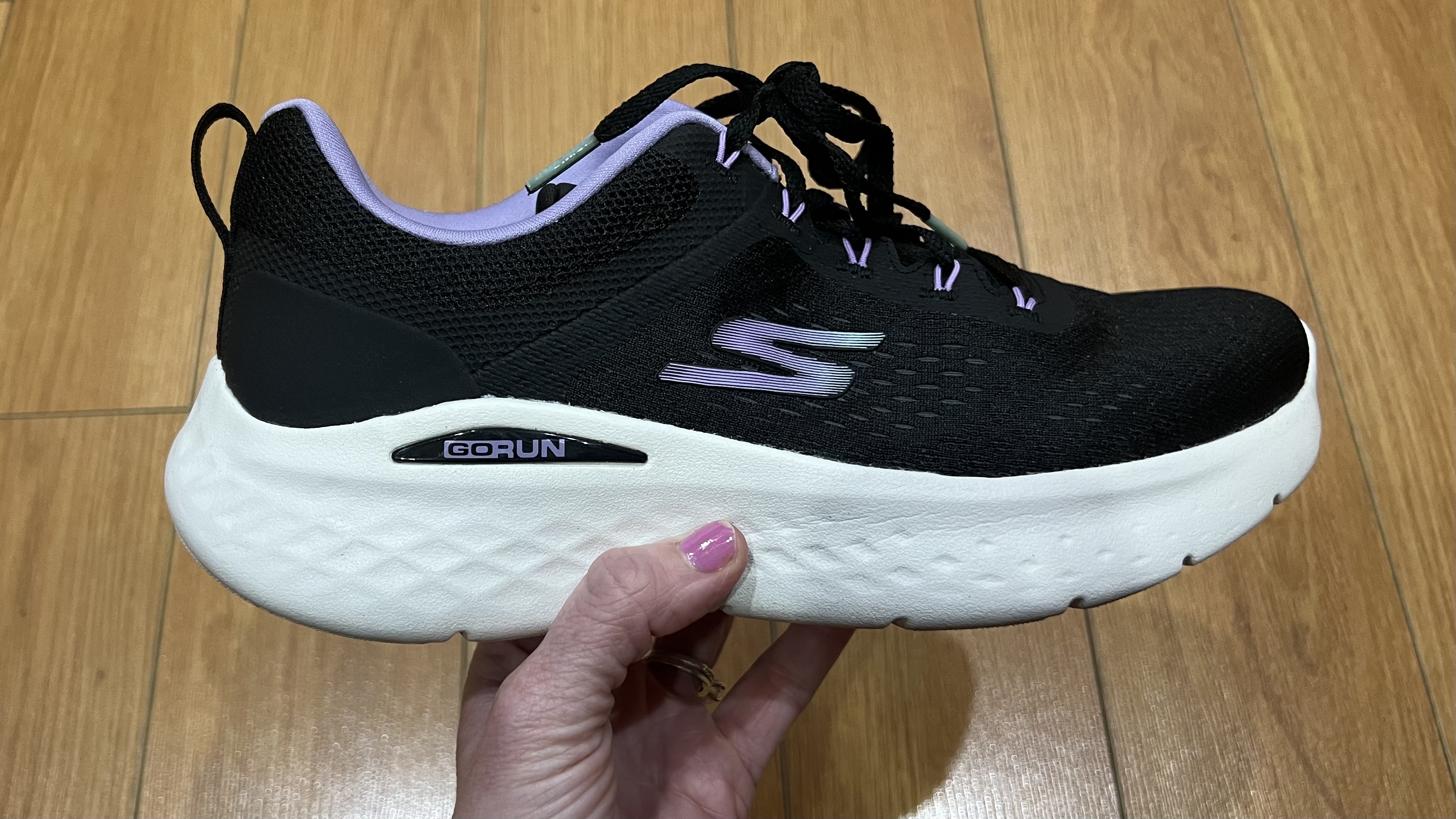
The upper portion of the GO RUN Lite is constructed from a breathable (recycled) mesh that’s supportive but gives when it needs to. A traditional lace-up system allows for a customizable fit, which is important when hitting the track.
Skechers GO RUN Lites also boast “M Strike” technology that promotes an efficient stride. There isn’t a ton of toe spring (an upward curve near the front of the shoe, where the toes sit), and while there is some flexibility in the sole, it’s not super pliable. I wasn’t sure if this is related to the “M Strike” feature or not, but I’ll go into this in further detail later.
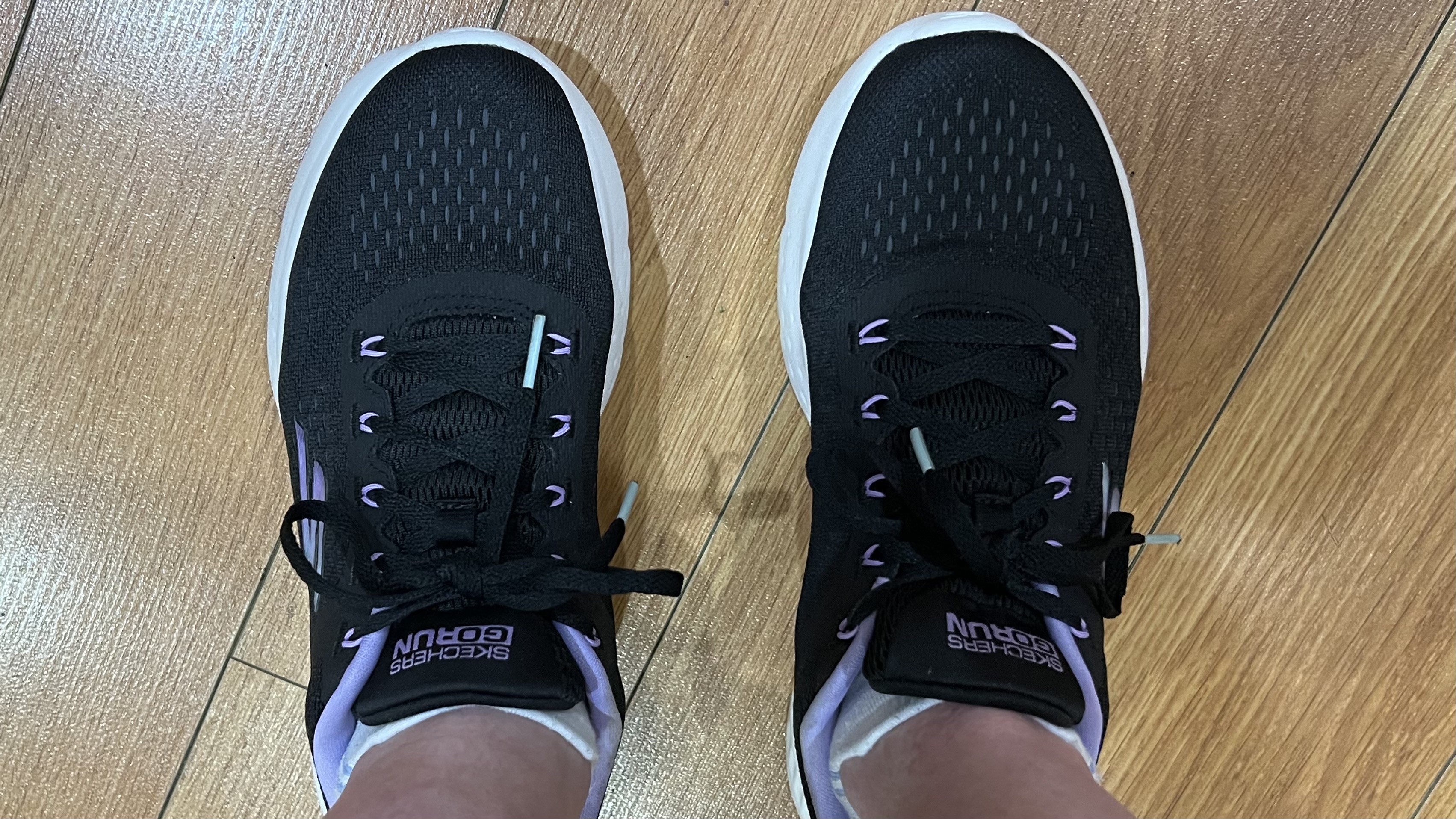
I’m usually a US size 8, and the 8’s in the GO RUN Lites fit like a glove. I didn’t even feel like they needed to be broken in that much, which is more than I can say for most of my shoes.
Skechers GO RUN Lite review: Performance
For the most part, the GO RUN Lites really exceeded my expectations. I fully anticipated having to ditch them for my Brooks after a mile or two, when my toes started cramping or my ankles began to ache. I’m happy to report that this never happened during my shorter-distance efforts. And even better than my Brooks, the GO RUN Lites didn’t end up feeling like bricks as the miles ticked by -– they definitely lived up to the “Lite” in their name.
When I ran more than three or four miles though, I started to feel the impacts of running in a shoe that’s designed for a more neutral stride. My arches are flatter than pancakes, so I’m most comfortable in sneakers that address chronic overpronation (like, surprise, the Brooks Adrenaline). While I always made it the full distance, I did notice some ankle, foot, and even knee pain as I crossed the finish line. Ultimately, my feet just require more motion control than the GO RUN Lites have to offer – if you have normal arches, they may feel right as rain for your entire run. But if you’re planning on any half-marathons in your future, you’d probably be wise to invest in a higher-end model made for long distances like the Skechers GO RUN Razor or GO RUN Speed Freak.
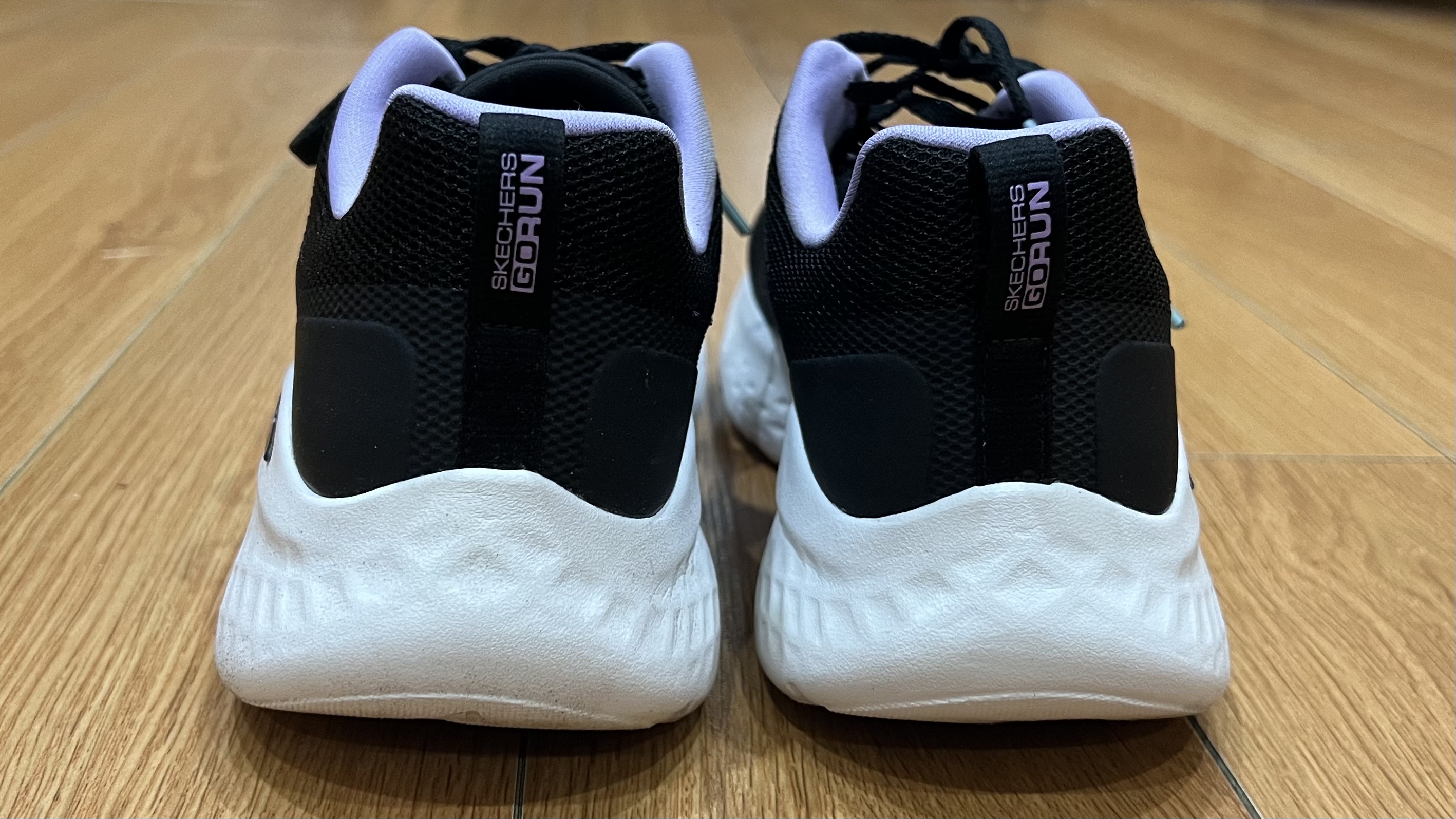
I mentioned Skechers’ “M Strike” feature previously, which is designed to “promote efficiency in each stride.” On one of my first 5ks in the GO RUN Lites, I observed some pain in my big toes and a bit of lag in my push-off. I’m used to shoes with a greater degree of toe spring, so it could be that I just needed some time to get used to a lower toe. I still felt it was worth mentioning – this supposed efficiency feature didn’t yield much stride efficiency for me.
Skechers GO RUN Lite review: Verdict
If watching the recent New York City Marathon (or your friend’s latest Turkey Trot) has inspired you to hop on the treadmill, the Skechers GO RUN Lite would make a great introductory pair of running shoes. They’re well-constructed, feature a lot of comfortable and supportive elements, and won’t break the bank if you decide that pounding the pavement isn’t for you.
If you do decide that longer-distance running is in your future, you’ll eventually want to transition into a shoe that’s right for your stride type, arch height, and distance goals, such as other easy running shoes like the Asics Gel Nimbus 25, or New Balance 1080v13. Take a look at the best running shoes on the market here. However, the GO RUN Lites can be your “training wheels” on the way to that first 10k.







